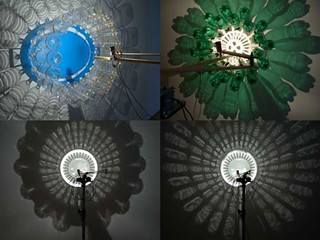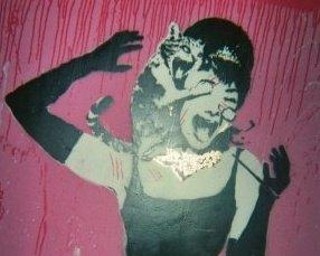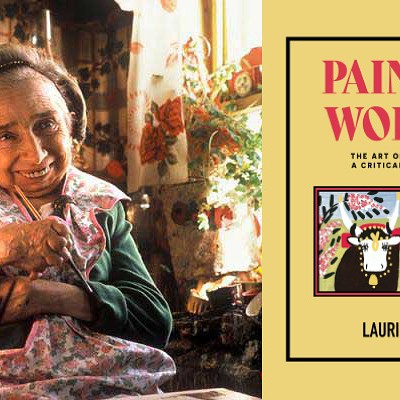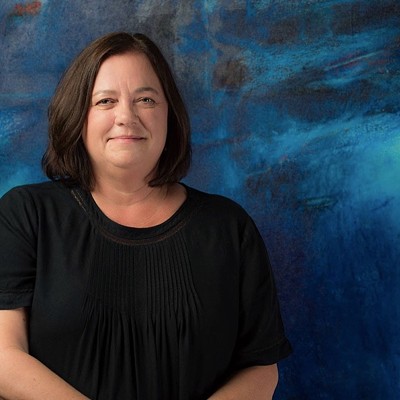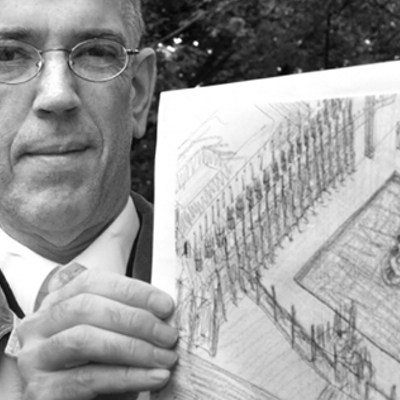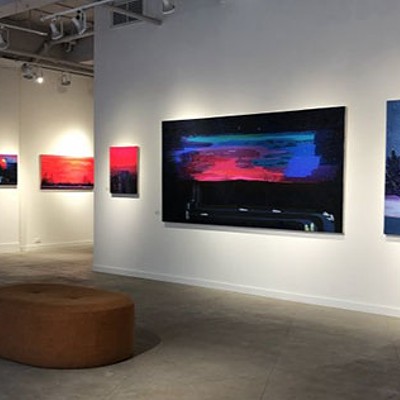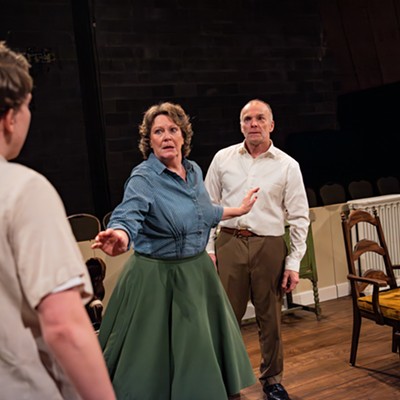A cluster of umbrellas springs to life: the objects appear to be breathing, folding and unfolding of their own free wills. As the umbrellas move, they compress accordions to emit eerie, otherworldly music. Light shines through their tops, casting kaleidoscopic shadows on the gallery ceiling. Quebec artist Diane Landry is at Mount Saint Vincent University Gallery hooking up The Defibrillators, the first major retrospective of her work, running until March 14. It's been 20 years in the making and showcases Landry's ouvres mouvelles, objects imbued with unexpected life, like the umbrellas in "Flying School."
Landry re-imagines the roles of innocuous objects, such as salad spinners, washing machines and water bottles, with the express purpose of unseating what she calls our "emotional memory." Her animated sculptures displace our associations with commonplace objects, unveiling their hidden beauty. Landry recycles discarded objects in wildly imaginative ways---to create "The Magic Shield" (2005), the artist collected imperfect keys from the trash at her local hardware store. The keys are now bells, rattling under a bed whose ghostly sheets rise upwards, like petals slowly opening.
Though Landry's work often serves as a reaction to contemporary events, it is far from dogmatic. Landry recalls creating "Tormented Tables" (1999) in reaction to the mad cow disease cases during the 1990s. At that point Landry, a former agricultural researcher, was trying to use art to convey her disgust with the human practices that created the disease. However, when many saw the exhibition, which consisted of several blood-red cows spinning wildly on turntables, their first reaction was to laugh. "They didn't see what I was trying to say," Landry explains. Now, she happily embraces all reactions to her work, as everyone walks into the gallery with a different emotional connection to the objects she transforms.
In "Madonnas" (2008), the washing machine takes on new life. She embeds the machine with motion detectors and mounts several spinning images of her sister in the machine's centre. When viewers approach, it responds by quickly spinning the images, which fuse together to form a three-headed torso. Landry's sculptures have a decidedly feminine bent: she calls "Madonnas" a "homage and hymn to the work of women all over the world." More often than not, she explains, it's women, not men, who are aware of how much water we're using. "My father doesn't have any relationship with the washing machine. He knows what it is, but he never touches it," she says. Water is a common theme. "It's a very important resource and I'm not sure we take care of it so well," Landry says.
The retrospective also includes videos of Landry's performance art, in which the artist's body resembles the objects she transforms. The most notable of these works is "A Radio Silence" (2008). While staying in a New York flat, the artist subjected herself to a strenuous test of her physical resolve, standing by different windows in the same position for two 24-hour periods. The piece explores the limits of the body and the act of documenting a lived experience. Landry recalls the slow dulling of her senses, as she became sleepier and unable to detect subtle changes in the light. She documented the experience by taking photos of herself, which she arranged into a video montage. The camera captures the sun's transformations in ways the human eye cannot, creating a final product both beautiful and unnerving.

